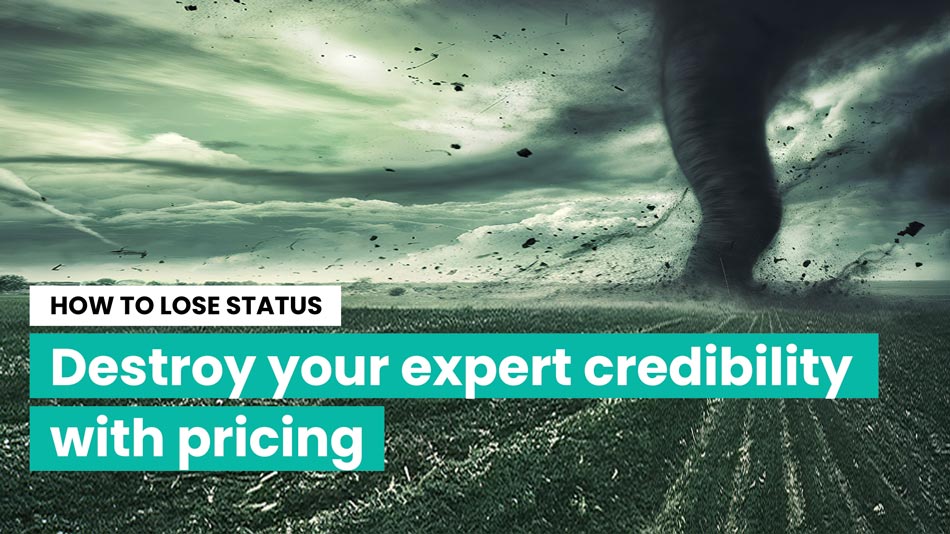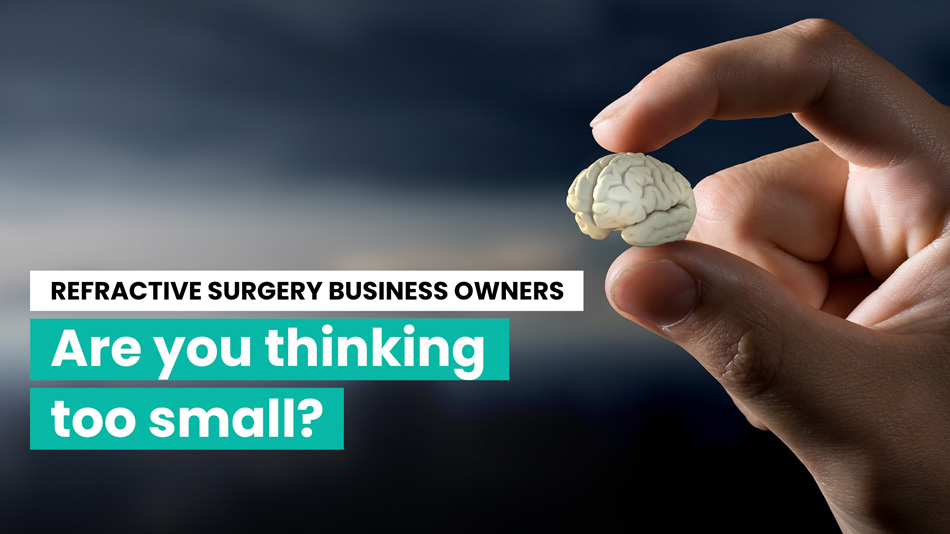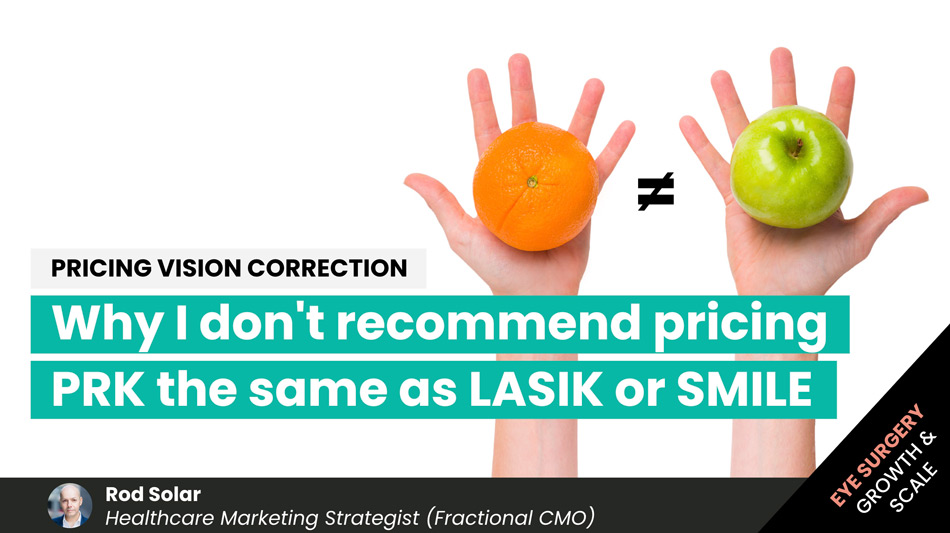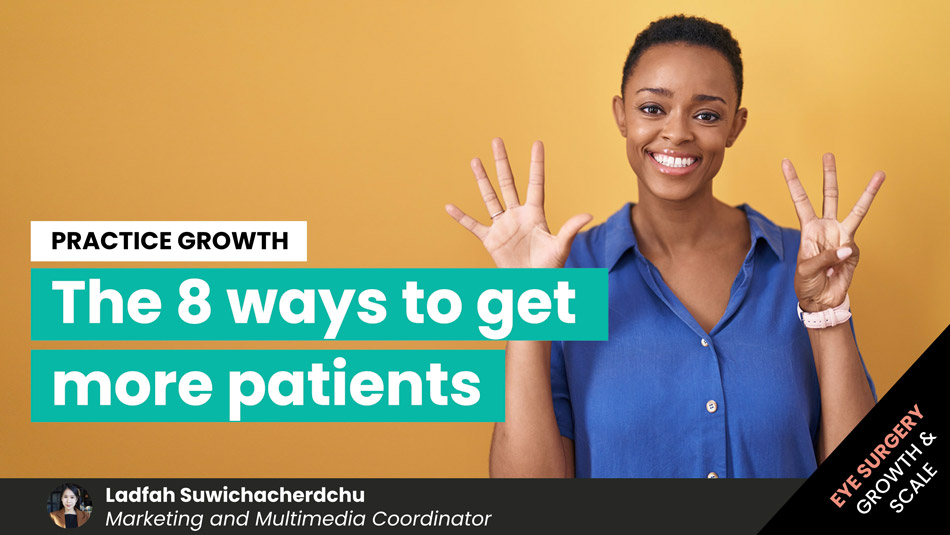3 ways practices can change the game
Rod Solar:
Hi, I’m Rod Solar.
Laura Livesey:
I’m Laura Livesey.
Rod Solar:
And we’re LiveseySolar, and we’re on a mission to help you build the practice that you love.
Laura Livesey:
Today, we want to look at the critical questions you have to reflect on and answer deeply and thoughtfully if you want to compete in private healthcare.
We’re going to take a look at some myths that exist in business, and certainly in healthcare businesses, talking about service and how your service is not what people want. They want something completely different. They have no interest in what you offer, surprisingly.
We’re going to talk about the type of people that want to do business with versus the many that don’t, and why that’s okay.
We’re going to take a look at how people are before they visit you and how they are after, and why that’s crucial for you to communicate, and you’re probably not at the moment.
And we’re also going to take a look at your competition, that nobody deals with this very much, and there can be. I’ve talked to many consultants about this, almost a hostile attitude and atmosphere around competition. And actually, we don’t see it that way. We’re going to show you why your competition is a good thing, and actually why there is room for everybody. There’s a piece of the pie for everyone.
And finally, we’re going to look at how we can create a unique selling proposition for you based on putting your customer in the centre and making your customer, and patient really, a hero.
There is a lot to talk about today, and I think Rod’s going to talk about transformation to kick us off.
LASIK marketing strategy 1. People don’t want your service; they want transformation
Rod Solar:
Yeah, yeah. People buy transformation, and that’s an essential point that I want to drive home because I think it’s something that’s not well understood out there, and it’s evidenced by the fact that people are not really selling transformation. If we look around at ads, most people are selling products; they’re selling services, they’re selling features, and some better ads sell benefits. And that’s great because that’s what you’ve been told to do by professional marketers for years and years and years, but the reality is that people buy transformation.
Laura Livesey:
What do we mean by that? We mean they don’t buy skin services, they don’t buy chiropractic sessions, they don’t buy laser eye surgery, they don’t buy knee surgery. They really don’t want that. That is not what they’re after. It sounds weird, but that’s not what they want. They want the after.
Rod Solar:
It doesn’t sound so weird if you think about it. Because if you think how many people out there are waking up in the morning and go, “Yeah, I really need some surgery.”
Laura Livesey:
Yeah. “That’ll make my day.”
Rod Solar:
Yeah. “That’s what I’m really looking forward to. Surgery sounds awesome.”
Look, of course, they see the surgery as a vehicle to something else, and I think everybody, once they really take a moment to think about it, they truly understand that. Essentially, transformation means turning somebody who is in a state before a procedure, (or they visit you, or a treatment plan or a surgery) and getting that person from point A to point B. The before state is where they see you, and the after state is after you’ve helped them.
It sounds like a straightforward way of looking at it, but it’s; actually, it’s game-changing.
You could even say that good marketing is simply the articulation of the move from before to the after state. Interestingly, the longer that line is from the before and the after, the longer it takes, and the more transformative you can help the patient become, the greater you can charge.
That’s why it’s possible to charge, say £3000, £4,000, £5,000 for a 15-minute procedure. However, we’re often missing the fact that people will pay that if they see the transformations on offer. You have to make sure that they know it.
Laura Livesey:
And that’s something really missing, and this is a huge opportunity for you. Now that you have this insight, that people want to understand that you get them, that you see how they are before and you see how they are after, and that you can put yourself in their shoes and speak to them in that way, now I want you to go and look at your competition’s websites.
Because if you do that, you will find that it’s not the patient as the hero on the cover of these websites. It’s the surgeon, consultant, doctor, or whoever’s providing the treatment or their team.
Rod Solar:
Or their team.
Laura Livesey:
Yeah. It’s very, very common.
Rod Solar:
Or worse, worst of all is your building. As if…
Laura Livesey:
Yes, your front door.
Rod Solar:
As if you’re in the business of real estate.
Laura Livesey:
Yeah.
Rod Solar:
Or even less interesting is a picture of your equipment, like an empty room full of equipment that effectively, to most unfamiliar people, look like torture devices. This is not showing the transformation.
Laura Livesey:
And this doesn’t work, and it doesn’t compete, and if you step out and do something differently, you will do much better than your colleagues.
Rod Solar:
Take a page from the airlines or travel companies. Do travel companies put out ads or television adverts or any kind of imagery that shows you waiting in the queue to present your passport, laboriously packing your suitcase, or standing on the tarmac as you wait in the freezing cold rain to board the plane?
It doesn’t show you any of that, yet what they’re selling you really is, say, a flight, but at the same time, it doesn’t show you any of that because that’s the arduous middle. What you really want to be doing is you want to show that person on the beach, right? You want to show that person enjoying a ski holiday; you want to show that person having the time of their life with their family. That’s what the after is. So the key thing here is to look at your competitors’ marketing materials; their websites are a great place to start. Are they speaking to the patients after?
Laura Livesey:
And what do we mean by that? When we say, I think it sounds very, very nice, and I’m sure you agree it’s a nice sentiment, but practically speaking, before and after, you can kind of get yourself in this headspace and start using this concept right away. There are five things that you want to look at.
You want to look at what somebody has before and after. Very factual. I can’t see without glasses; afterwards, after, say eye surgery, I can see. That’s the have.
Then we look at how they feel before and after. So how do I feel before I have the skin treatment with my dermatologist? I feel itchy. I feel old, I feel like I’m ageing faster than I need to. After the treatment, I’m clear-skinned, but I feel confident. I feel like I can take on my life again. We’re going to get into this a lot more in another video, but these are some of the things you can start to think about, which is the feeling behind this before and after.
Then we look at their average day. What does a typical day look like before the treatment? Hiding your rash or whatever, wearing long sleeves, turtlenecks, mock necks, that sort of thing. Afterwards, again, you’re able to bare skin; you can feel free to be yourself. It ends up being much less about that physical, obvious thing of I can show my skin, but it ends up being something about liberation or freedom or some aspect of emotion that you’d want I have in your life.
Then we look at things like status. So how does somebody else see me before, how does somebody else see me after? Usually, that looks at somebody seeing me as maybe older than I am, that sort of thing, say I’m wearing reading glasses. Then afterwards, I’ve taken life and really done something and taken a step forward so that you might be seen as courageous. You can think about how that’s a really positive thing to associate with your treatment.
And then finally, the fifth thing that you look at with befores and afters is this thing we call good and evil, which is a way to look at what should be happening to me, an issue of fairness really in life. What should be happening to me, before it’s not really happening, and afterwards what should be happening?
We’re breaking down the before and after and using this in our copy. So we start to look at how we can leverage these emotions and talk about the things that patients really care about. The thing is, this is what they want to hear from you. They want to feel like you understand them, that you get them, and that’s a critical thing that’s missing today in healthcare, and it is an opportunity for you if you take it.
Rod Solar:
At this stage, I just want to underscore the value of writing in this context. Imagery is vital and it can help reveal before and after states in a split second.
Laura Livesey:
Yes.
Rod Solar:
But you need the writing in your website, in your email, in your confirmation letters, in your social media, everywhere to speak to these befores, so that people feel like you’re empathising with them, and to then speak to their afters, so that people have hope that you can be the guide to get them to where they want to go. That’s where writing is the heavy lifter in all of this. If you do one thing right, hire a marketer who can help you write.
Laura Livesey:
And before they can do that, this is why we said at the beginning, you have to really think deeply about this and thoughtfully about what it is that you’re offering, and how does it intersect with your customers, and how do they really feel? And that is also something that you can write that original brief. If you can give that to the people helping you, they will be starting by running as opposed to walking. You need to do and will help your business if you can do that first.
LASIK marketing strategy 2. You’re not competing with every other surgeon; you’re competing with anyone appealing to your avatar
Rod Solar:
So let’s talk a little bit about the competition and how we need to contextualise them. Laura, why don’t you tell us how you would identify who your real competitors are?
Laura Livesey:
Yeah, this is a real concern and a common question that we hear, which is “this person operating down the street, they’ve been in business a long time, they’re getting all the referrals. I can’t compete with that. How am I going to break into that market? The competition’s too strong, or there’s so many of them, so many competitors, patients will never come to me. I’m a new entrant in the market.”
But the reality is that the competitive set, what we call an invoke set, is usually only two or three clinics. You have a high likelihood of getting into that set if you follow the steps that we just talked about in terms of identifying who you want and invoking the feelings that they’re after, because you’ll have a high chance of connecting with them.
But the reason for that is that we agree with you, you’re not going to try to break into entrenched referral patterns. It’s not a bad strategy in some markets, and that can make sense in some places if there are not a lot of referral patterns and you have relationships and that sort of thing, but it is challenging for the rest of us to do it that.
So you have to go after areas of opportunity, generally online. You’re looking for competitors showing up for the problems your key ideal avatar is typing into Google or a search engine. You’re trying to find very targeted things like best [blank] treatment in [blank] place. So you’re looking for the “best dermatologist in Preston”. Whatever it is. You want to pick an area, pick a service, and even go for the pain, or the condition is often what people, where their headspace is at, so psoriasis in wherever it is. Looking at “Birmingham psoriasis treatment”, that kind of thing.
Who shows up when you type that in? Do you want to look at that and see who’s popping up? Really, the first page is the only thing that matters, but you want to see, okay, who’s showing up? And then compare them against the types of service offerings they’re providing you. Is it a chain, is it a hospital, like a Ramsay, a Spire, that sort of thing?
Who’s providing that service, and how would you compete against them? And remember, you want to apply the criteria that we just gave you initially. Are they going after the emotions? Do they understand the patients? Because we are telling you that patients do not respond to those generic websites that just drone on unemotionally about the condition and the treatment. That really doesn’t get through to them.
So you know, if you just do that brief search and look at who’s coming up and you just evaluate based on that, there’s a lot more that you can look at. Still, I think you can do a very cursory look and just get a nice tight picture of, “Okay, it looks like most of the people in my market don’t get it.” You will find this, “they’re really not empathising, they’re really not building a real relationship with the customer. Therefore, there’s an opportunity there for me.”
That’s how we look at the competition. The competition for emotional headspace. How can we compete emotionally? Can we? Is somebody already sewing it up? You can see this, for example, in something like plastics. In surgery, some of the chains, if you look at-
Rod Solar:
Yeah, it’s remarkable.
Laura Livesey:
If you look at many independents, it’s pictures of the surgeons on the homepage. There are very few that do well. One of them is MYA, they have patient stories on the homepage, so the first thing you see is nothing to do with the surgeon, which I know there’s a lot of controversy about that. Still, really if you’re giving people what they want, that’s exactly what they want, to see themselves as the hero.
So you can do a review and say, “How are people doing in that sense?” And it’ll give you a sense of whether they can compete online. And the reality is, if you do that, you will be one of the three in that set that people are deciding upon to book that next step in the sales process, which is usually the end initial consultation.
(NOTE: Want to see how your practice marketing measures up against the best in class? Take this 5-minute quiz to see how you stack up in the 9 areas of practice marketing and get specific tips and advice on how you can improve your weak points and better leverage your strengths).
LASIK marketing strategy 3. You are not the hero of the story; the patient is the hero
Rod Solar:
I think an important idea to get through to people here is that you have to have an active engagement with your competitors.
Laura Livesey:
Yeah.
Rod Solar:
What I find is a lot of people take one of two routes. They think to themselves, “Well, if I’m going to be competitive, then I have to slag off the competition, and I don’t want to do that,” rightly so because that doesn’t get you anywhere.
And so what they do is they avoid talking about it at all, and I think the issue there is that you fail to communicate to people what makes you different. And suppose there’s one thing that I have found that makes a real difference between those who succeed and those who don’t. In that case, those who really understand their point of difference, who can communicate it very, very well, and lastly, who identify people who believe what they believe, in the sense that this difference really matters.
If you can identify those three things and make that work, then you’ve got a thriving practice on your hands, and we’ve seen it again, and again, and again. The ones that succeed are the ones that are different, and they’re different in a way that appeals to their customer avatars, and they communicate it really, really well again, and again, and again.
Now, I think what’s important to get to at this stage is we do a lot of research in contemporary marketing areas. There are many great thinkers out there, and we’re not afraid to draw on lots of great resources for many of the things that we share with the medical community. And one of those things is the StoryBrand concept, by Donald Miller.
The StoryBrand concept is all about utilising the fundamental narrative structure. Now, this will sound a little academic, but bear with me. This makes sense once you know it. Utilising the fundamental narrative structure that is inherent in all of our great stories, all of our myths, all of our legends, all of our big-budget Hollywood movies, that help us understand what people really, really want. In every big story we have what’s called a character, right? The main character and that’s who the patient sees themselves as. They are the main character in their story.
You’re the main character in your story, right? What you’re trying to do is, you’ve got a problem in life, say for example you have a practice that isn’t getting off the ground, or you don’t know what to do about developing a practice. It all looks like a maze. It’s really, really fundamentally difficult to get started.
So you have a problem, and the patient has a similar problem, so they have a problem. It’s a maze, it’s a whole lot of jargon out there. They don’t know what’s going on, but they still have a problem they need to fix, right? Whether it’s crooked teeth, a crooked nose, bad eyesight, perhaps breasts that aren’t large enough to their liking. Whatever it is, that is a problem that they see.
They have what’s known as an external problem, which is, “Okay, I have eyeglasses.” Perhaps there are many people who don’t like eyeglasses, most of the population are perfectly happy with them. So what separates those who have eye surgery? Well, those that have an internal problem too, and that internal problem might be, “Those eyeglasses make me feel like I have a barrier in front of the world and me,” or, “make me feel inconvenienced,” or, “make me feel constrained, lacking freedom.” Whatever that is, right? That’s the big problem that they have.
Now, what do they need to do? Well, like in every story, they need to meet a guide, because it’s a guide that eventually is going to give them a plan and call them to action to say, “Okay, you have a problem,” say, “Luke Skywalker. I’m Ben Kenobi. Guess what? I have the empathy to understand what you’re going through. I’ve been there. I know what it’s like. I’ve seen it many times before, and even better, I have the authority and credibility to guide you down the path to get you to what you want, which is the alleviation of your problem.”
So the patient here is saying, “Where’s my guide? Where’s my Ben Kenobi?” And that’s who you are, by the way. You, the consultant, you, the doctor are the Ben Kenobi in the story. You’re not Luke’s Skywalker. In other words, you’re not the hero of the story; you’re the guide.
What that means then is that, as the guide, you need to give them a plan. And that plan involves a process. Very, very simple process. “Luke, this is what you do. You’ve got to do a little bit of training with me. I’m going to give you a lightsaber. We’re going to hop on a starship, and then we’re going to defeat the Empire.” Right? Very, very simple, in a nutshell.
So what you have to do as the guide to the patient is something very similar. It’s like, “Look, patient, the first thing you’ve got to find out is whether or not I can help you, okay? So what that involves is coming in for an appointment. Second, I’m going to treat you. Of course, assuming you’re suitable. Finally, step three, you are going to enjoy the happy life you’ve always dreamed of.” That’s the plan.
Laura Livesey:
And then what often comes next is, “Oh, what if it won’t work?” So you need to have an agreement with them. You need to provide credible evidence for why you’re good at what you do. And here’s where the normal information that most people barrage potential patients with comes in. You do need to have it, but it needs to take a backseat to the emotional side that we talked about.
So if you think about real estate on a website, for example, all the emotional things that we’ve been talking about, the before and after, needs to be on your homepage, at the top of every page. All of the backup, the evidence, the facts, the research needs to be there, because people buy with emotion and justify and back up with logic. It needs to be there at the bottom, so you do need to have it. And one of the things that you want to have is this agreement as to what’s going to happen if something goes wrong?
This is where things like aftercare come in. People that can offer guarantees if you feel, and we really strongly, we actually tend to pick our clients based on how high quality they’re offering is and how much anti-buyer’s remorse evidence they can provide.
So for example, with a lot of our eye surgeons, some of them would say, “Yeah, if the patient’s not happy a hundred percent, I’m going to redo it for them.” That makes us very happy because that’s really a solid offering. It’s something people can get behind. It does also help to increase sales, but it also helps to create a virtuous cycle of people creating wonderful reviews and staying happy as customers.
So that’s the next step, and of course, to get them then, once you have this all laid out and they understand, and they think, “Okay, you’re my gal. You’re my guy,” what you need to do is give them a command. Because this is all fantastic and they like what they see, but this is where people often fall off a cliff, because they come to your website and 95% plus tend to go away forever.
So what you need to do is give them a command and tell them what you want them to do. And it’s not “buy the treatment”, it’s take the next little tiny baby step so that you get on the bus, so that you start to figure out is this for me? Because that’s where they’re at. They are nowhere near buying anything from you. They just are ready to, like, “Oh, this sounds interesting. Oh, you could potentially change my life. I kind of want to know more about this.”
So you have to give them a command, and it’s what we call a primary call to action. You want to have a primary call to action, which is usually a consultation, it’s usually sort of the next step, but perhaps for you, it might be something smaller. A mini-consultation or a Skype consultation, or it may be something entirely different. Basically, it’s either a step involving a small amount of money or a small amount of time, and this call to action explains that very clearly. It says, “Call us now to book a consultation.” It basically tells them what to do. And we need also to have a secondary call to action, and it’s for those who aren’t ready to make even that small investment. You need a mini-investment, and that’s usually something where we’re going to offer them some high value for no money and very little time.
The first step that we talked about, it’s called a trip wire. That’s that first call to action, we’re getting somebody to really take a real big step in terms of getting involved with the practice. The second one I mentioned is a smaller one, it’s called a lead magnet. It’s something that is either an online quiz, or a tiny little one or two page document that gives them the answer to a burning question they had about this concern that you are treating. Those are the two key next steps for calls to action.
Rod Solar:
Yeah, so I mean, Ben Kenobi, right? The first thing he did, he wasn’t like, “Okay, Luke, now let’s go face Darth Vader and win over the Empire,” right? I mean that, would’ve been a big ask, and Luke would’ve said, “Whoa, whoa, whoa, whoa, whoa.”
Laura Livesey:
“Forget it.
Rod Solar:
“I don’t care how good your training program is, but it’s not going to be preparing me for that.” So what did Ben do first? Ben, for example, says, “Luke, let’s get out of town and let’s go and see if we can find a pilot to get us off this planet.” That’s the first step, then after that Ben Kenobi convinces Luke to jump on the Millennium Falcon so that they can go and actually identify how to rescue the Princess. And so they rescue the Princess, and that’s the second step. And then there are more steps that follow, and Luke doesn’t get to fight against Darth Vader until the second movie, near the end, and that’s after a whole series of trials that he has to follow until he finally, finally at the very, very end faces his nemesis, which effectively guarantees him hero status across the galaxy.
So really, at the end of the day here, what we’re after is two possible ends. The hero sees themselves ending in success, which for example in the eyeglasses context, it’s freedom from glasses and contact lenses. But most importantly, it’s the confidence that comes with going through a trial, going through a challenge and coming out the other end surviving. And that’s the kind of confidence you need to provide for your hero as his trusted guide, to get him over that hump or her over that hump to get to the place where they want to go.
Nothing worth doing isn’t worth earning, so these people need to get over certain challenges in order to get to the stage where they want to be.
Alternatively, I think it’s important to sprinkle a little salt on this dish, right? You can’t oversalt it, you put just a little sprinkle of salt, which is letting them know that if they don’t go forward now, if they don’t move forward now while they’re in the process, while they’re on the journey, they might end up living in the failure state.
Which essentially is not progressing from the before to the after, sitting there for potentially years and years and years suffering the same as they’ve always suffered and not getting what it is that they want. But again, you can’t overdo it. Just sprinkle the salt, just a tiny little bit in your copy, just a tiny little bit in your messaging, just to remind them that there are stakes here and it matters.
(NOTE: Want to see how your practice marketing measures up against the best in class? Take this 5-minute quiz to see how you stack up in the 9 areas of practice marketing and get specific tips and advice on how you can improve your weak points and better leverage your strengths).
How to change the game
Laura Livesey:
Great. So, now we want to hear from you. Now that you’ve heard from us about what people really want to learn about, and it’s not your services, now it’s the time to pull out that pad of paper, get out the notebook, get out the laptop and really answer these critical questions.
We’re not kidding about this. This will benefit you, regardless of whether you just do it yourself or whether you do it yourself and you work with a marketing professional. You want to get these on paper. So again, you want to think deeply and thoughtfully about what transformation are you providing? What is it that is the thing that you’re doing for the ideal patient? Who is your ideal patient? Of course, you can have many, many different types of patients. If you say, “Oh, my ideal patient is 27, and they have this job and they make this much money, and they read these magazines, and they do this on the weekend,” we’re not saying that’s the only age that you’re dealing with, or that’s the exact salary, but you want to just get some ballparks as to who is your ideal patient.
And then look about what does that person have before they have your service, AKA your transformation, and what do they have after they’ve dealt with it? And then next we want you to do what we talked about and look at your competition through this lens. How are they communicating to that ideal customer or patient? What are they saying? Are they hitting the mark? Do you think that they’re competing with you? Really? Probably they’re not. So it’s probably an excellent thing for you to do.
And then finally, what is that hero’s journey that potential patient is going through. Really put yourself in their shoes. Think about the process that they’re going through. Think about the challenge they have. Think about how you can be their guide to take them through the whole process. Think about what calls to action you can tell them to take.
What is the first step in the journey? Is it a consultation? Is it something else? Think about what you can do to alleviate their fears about taking that step. Can you have some kind of risk reversal policy? Can you have a guarantee of some kind? What can you do to make it comfortable for them to take the next step?
And then finally, what would happen if they don’t do business with you? What would happen if they didn’t become your patient? The reality is that you better have something that will provide a significant amount of transformation. Otherwise, why be in business? Why do it? So they’re going to lose out if they don’t do business with you if they are your ideal target avatar. Figure out what that is and quantify it, write it down. I hope you enjoy doing that. I think it’ll bring you a lot more clarity on your business. I’m Laura Livesey.
Rod Solar:
I’m Rod Solar.
Laura Livesey:
And we’ve really enjoyed sharing the critical questions that you need to answer if you want to compete properly in private healthcare.
(NOTE: Want to see how your practice marketing measures up against the best in class? Take this 5-minute quiz to see how you stack up in the 9 areas of practice marketing and get specific tips and advice on how you can improve your weak points and better leverage your strengths).
About the author

LiveseySolar
LiveseySolar’s mission is to double the size of 150 cataract and refractive surgery practices. Using our proven marketing frameworks and deep market knowledge, our customers can predictably and sustainably grow their practices so that they can enjoy a healthy balance between both worlds – a successful private practice and a happy life.
Related Posts
Meet our Co-Founders
We’re passionate about helping leaders of high-quality, growth-minded practice owners double their practice revenue
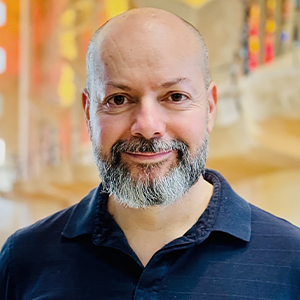
Rod Solar
Founder & Scalable Business Advisor
For over 20 years, I’ve helped ophthalmology entrepreneurs scale their private practices. I specialise in doubling revenue within three years by offering a proven framework, hands-on experience, and a team of experts who implement what works. We take the guesswork out of growth and scale, so you can focus on delivering exceptional patient care while maximising the value of your business.
LiveseySolar completely transformed the way we were approaching this… We’ve gone from having just the dream of having a practice to having a practice up and running with people making inquiries and booking for procedures… It’s extremely pleasing. We feel lucky we connected with LiveseySolar.
— Dr Matthew Russell, MBChB, FRANZCO, specialist ophthalmic surgeon and founder of VSON and OKKO

Laura Livesey
Founder & CEO
I’m the co-founder & CEO of LiveseySolar. I’ve developed powerful eye surgery marketing systems that increase patient volumes and profits for doctors, clinics, and hospitals, since 1997.
Rod and Laura know as much about marketing surgery to patients as I know about performing it. They are an expert in the field of laser eye surgery marketing. They know this industry inside out. I believe that they could help many companies in a variety of areas including marketing materials, sales training and marketing support for doctors.
— Prof. Dan Reinstein, MD MA FRSC DABO, founder of the London Vision Clinic, UK






